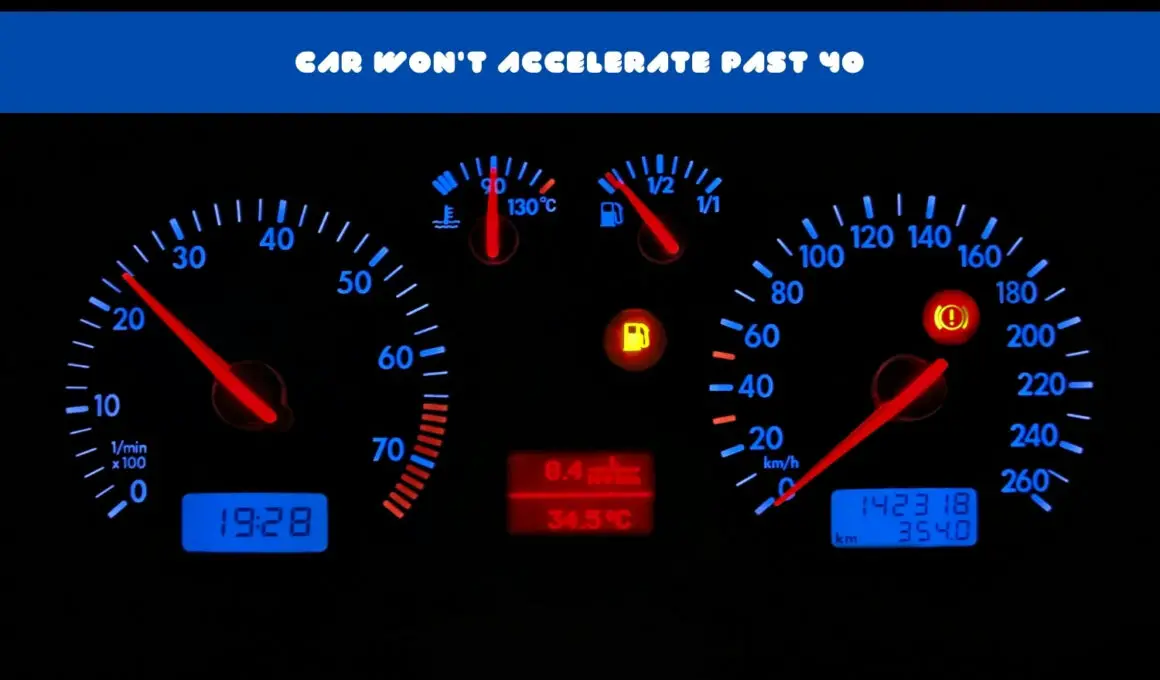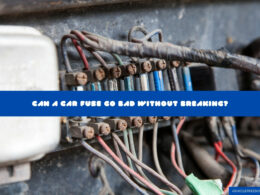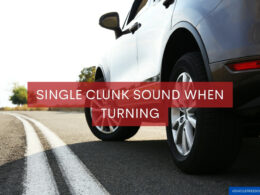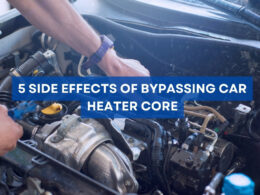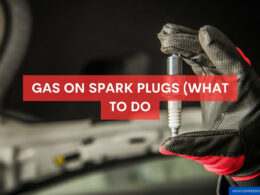In This Article Show
While cruising along an extended stretch of road, you abruptly realize that your car refuses to exceed 40 mph, despite pressing the accelerator. Although it can be frustrating and inconvenient, stay calm and understand that various factors could be causing this issue.
There are many reasons why your car won’t accelerate past 40; some of these issues are relatively easy to resolve, such as removing a trapped mat under the gas pedal, releasing the emergency brake, or cleaning clogged filters. However, several others require professional attention, including malfunctioning electrical sensors, spark plugs, timing belts, and fuel injectors.
Further, this article will explain ten common causes of cars not accelerating past 40 miles per hour and their respective fixes.
NEW: Green Fluid Leaking from Car (Causes & Fixes)
10 Reasons Why a Car Won’t Pass 40
When a car refuses to accelerate past a certain speed, it is quite concerning for the driver. However, if you are aware of various factors that could be causing this issue, you can address it effectively.
Read on to learn the ten reasons that might be stopping your car from accelerating:
1. Mat Stuck Under Gas Pedal
Floor mats can sometimes slip out of place and wedge underneath the gas pedal. This usually happens if the mats are not secured properly or are not the correct size for your vehicle.
When the mat obstructs the gas pedal, it prevents the pedal from entirely depressing, limiting acceleration.
How to Fix?
The fix, in this case, is quite simple.
- Inspect the area around the gas pedal.
- If the mat is causing the obstruction, remove or reposition it correctly.
- Make sure it doesn’t interfere with the pedal’s movement.
Consider investing in anti-slip mats or clips that secure the mat to prevent future issues.
2. Engaged Limp Mode
Modern cars now have a limp mode, a built-in safety feature that activates when the car’s computer detects a severe problem that could potentially damage the engine or transmission. This could be due to issues with sensors, low fluid levels, gaskets, or even within the transmission.
When the limp mode is engaged, the vehicle’s speed and engine power are limited, preventing further damage and hindering acceleration.
How to Fix?
Sometimes, the line mode can be triggered accidentally. For instance, the limp mode is on without checking engine lights or other warnings. In that case, you can pull over your vehicle to a side and restart.
However, seek professional assistance immediately when the dashboard is illuminated with multiple warning lights.
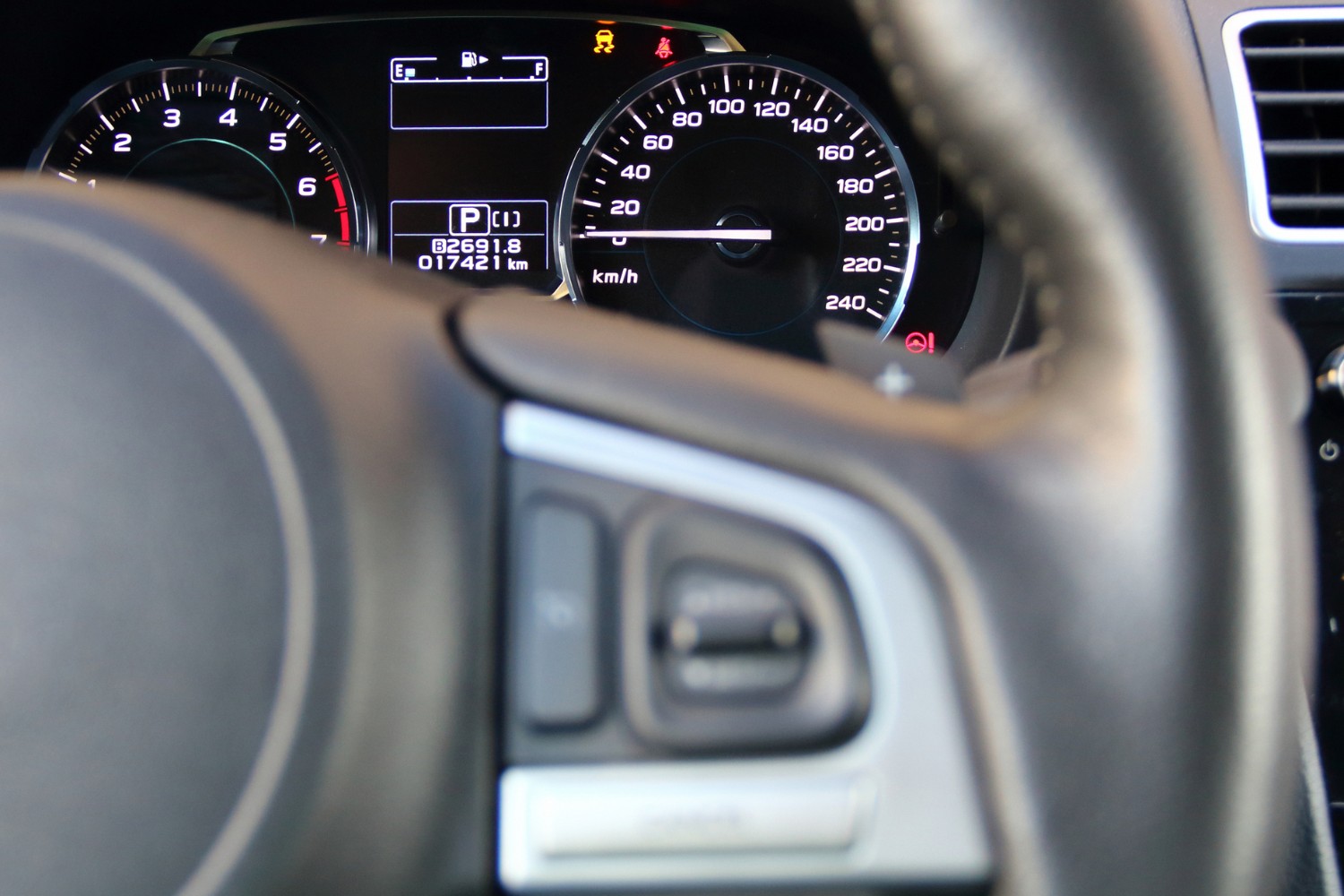
3. Emergency brake Partially Engaged
Occasionally, drivers forget to disengage the emergency brake, or the brake fully could become partially engaged due to a mechanical issue.
Either way, the car struggles to accelerate past a certain speed (maybe 40) as the emergency brake applies resistance to the wheels.
How to Fix?
Check if your emergency brake is partially engaged by ensuring it is fully disengaged and the dashboard warning light turns off.
If the issue persists or the brake seems to engage on its own, inspect your braking system by a professional mechanic to resolve any underlying problems.
4. Malfunctioning Clutch
In manual transmission vehicles, the clutch connects and disconnects the engine from the transmission.
A malfunctioning clutch won’t fully engage or disengage, which affects the transmission’s ability to change gears smoothly and can limit acceleration.
How to Fix?
If you feel the clutch is loose and limiting your car’s acceleration, we recommend you take it to a garage for inspection. The clutch plates may have worn out and need a replacement.
5. Faulty Electrical Sensors (MAF, Throttle Position (TPS), O2)
Modern engines have an Engine Control Unit (ECU) that relies on the data from various sensors to regulate the injection. The standard sensors whose input mainly affects the combustion are MAF, TPS, and O2.
The Mass Air Flow (MAF) sensor measures the amount of air entering the engine, the Throttle Position Sensor (TPS) monitors the position of the throttle, and the Oxygen (O2) sensor measures the level of oxygen in the exhaust gases.
If any of these sensors is at fault, it can send incorrect information to the car’s ECU, leading to poor engine performance and limited acceleration.
How to fix it?
Error codes will detect the issue of malfunctioning sensors. P0101 is associated with the MAF sensor, while the O2 sensor and TPS sensors can send P1062 and P0120 error codes, respectively.
A professional OBDII scanner mechanic will check out these codes and suggest the respective fixes.
6. Misaligned Timing Belt
The timing belt is responsible for synchronizing the crankshaft and camshaft rotation, ensuring the engine’s valves open and close at the correct times for optimal performance. If even a tooth of the belt is broken, it gets misaligned and starts causing acceleration problems.
If the timing belt is loose or worn out, replace it immediately to avoid complications.
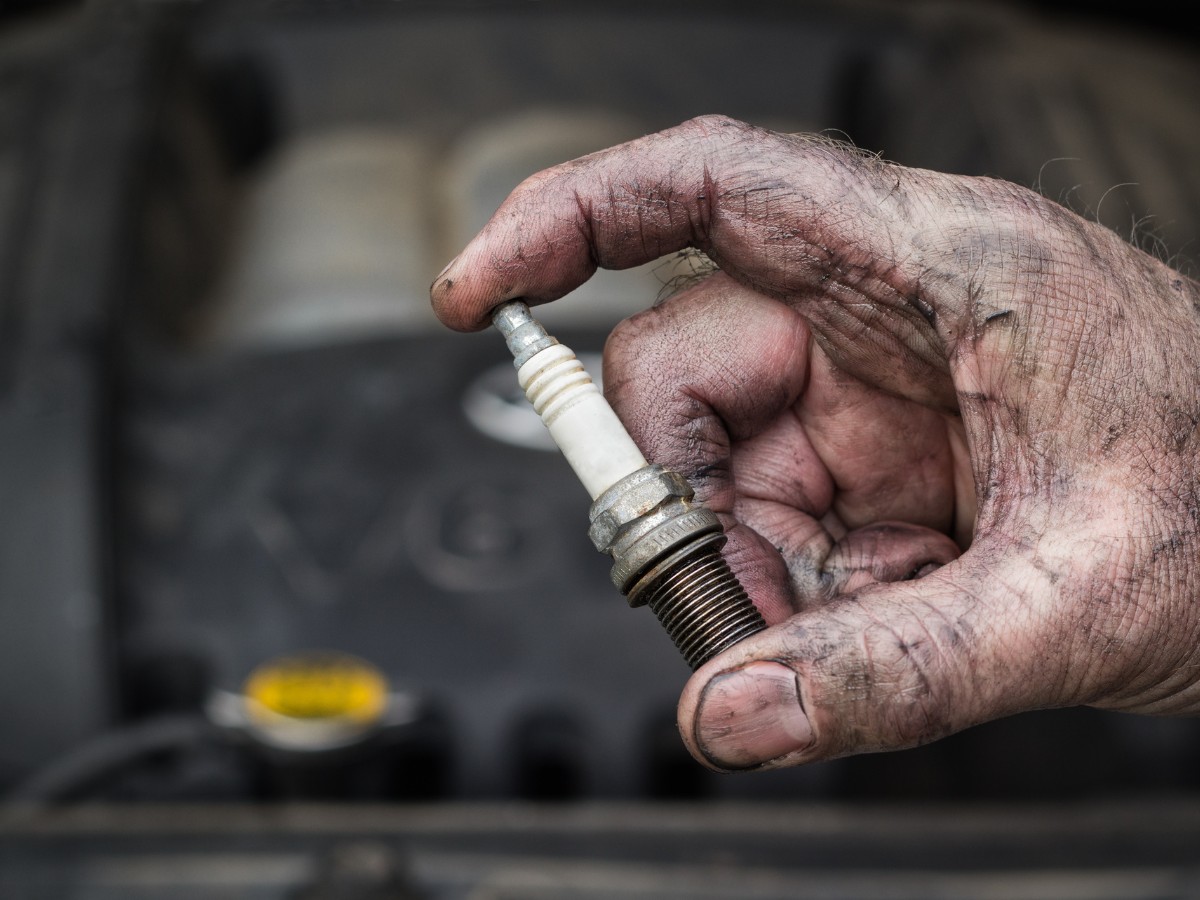
7. Dirty Spark Plug
Spark plugs ignite the air-fuel mixture in the combustion chamber, providing the necessary power to propel the vehicle.
Over time, spark plugs can become dirty or worn out, which leads to poor combustion and reduced engine power. So the car doesn’t accelerate to high speeds.
How to fix a faulty spark plug?
- Make sure the engine is cold and battery terminals are removed.
- Find the spark plugs under the hood, attached to thick wires called ignition coils.
- Disconnect the ignition coil from the faulty spark plug.
- Remove the old spark plug by turning it counterclockwise using the spark plug socket and wrench.
- Use the gap gauge to ensure the new plug’s gap is within the recommended range.
- Hand-tighten the new spark plug, then use the torque wrench to tighten it to the manufacturer’s specifications.
- Reattach the spark plug to its auxiliary components.
8. Problems with the Fuel Injector
The fuel injector is another primary component that delivers the precise amount of fuel inside the combustion chamber. If it’s clogged or doesn’t function problem, the engine misfires, and thus cannot go beyond certain speeds.
The problem with fuel injectors is usually diagnosed with engine misfiring and severe vibrations. However, you may be unable to fix it yourself since the injectors are part of the engine, and the whole assembly needs to be disturbed for this change.
Make sure to get it fixed by a mechanic.
9. Clogged Filters
Both air and fuel filters play crucial roles in your car’s performance. A clogged air filter can restrict airflow to the engine, while a clogged fuel filter can limit the amount of fuel delivered to the engine.
Reduced airflow and fuel delivery can lead to poor combustion, limited power, and reduced acceleration.
How to fix clogged filters?
- Locate your car’s air and fuel filters.
- Inspect, and replace them if they are dirty.
- If you drive in dusty or dirty conditions frequently, consider checking and replacing the filters more often to ensure optimal engine performance.
10. Problems with the Air Intake
The air intake system supplies the engine with adequate air to mix with the fuel for proper combustion.
Issues with the air intake system, such as a cracked or disconnected hose, can lead to poor engine performance and reduced acceleration due to restricted airflow.
How to fix it?
- Carefully inspect the air intake system, the intake manifold, the hoses, and the joints.
- Look for any visible cracks or damage.
- Replace the damaged part.
- If you’re unsure of the cause, consult a professional for diagnosis.
Conclusion
Car acceleration beyond 40 mph is linked with multiple causes.
Some problems are simple to fix, whereas others require professional attention. With the potential causes and their fixes listed in this article, you’ll probably address the issue.
However, if you’re unsure of the cause or don’t feel confident doing repairs, always seek professional help.






